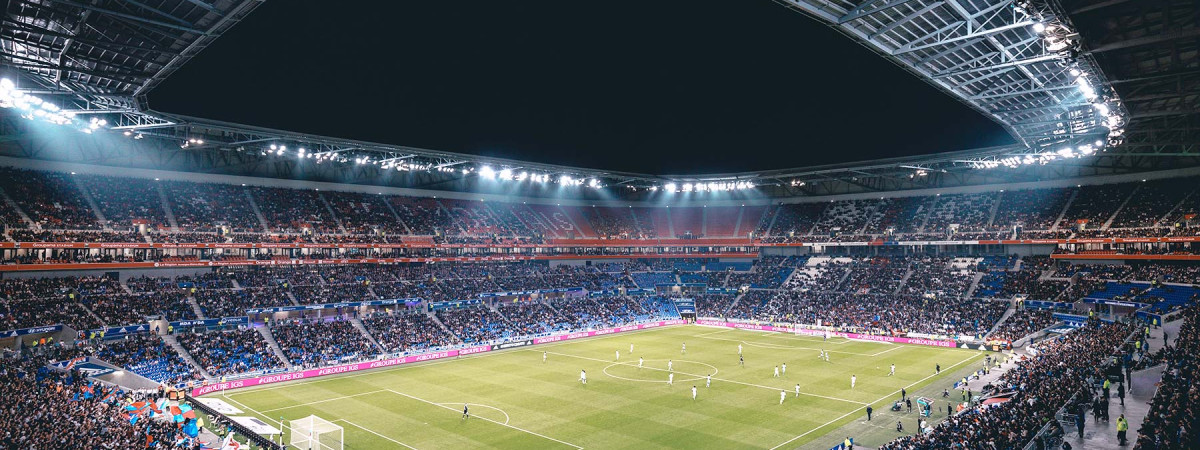Welcome, football enthusiasts! The anticipation for the FIFA World Cup 2026 is palpable as fans around the globe gear up to witness the grand spectacle unfold in stunning FIFA World Cup stadiums. These architectural marvels are not just venues for the games; they represent the heart and soul of the tournament, encapsulating the passion and spirit of the sport. Join us on an exciting journey as we explore the spectacular FIFA World Cup stadiums of 2026, delving into their rich histories, unique features, and the electrifying atmosphere they promise to offer. Get ready to be immersed in the world of football like never before!
Introduction to the 2026 FIFA World Cup
The 2026 FIFA World Cup is one of the most anticipated global sporting events, featuring top-tier national teams competing for the prestigious title. With the tournament set to take place across several awe-inspiring FIFA World Cup stadiums 2026, fans are gearing up for an unforgettable experience.
Host Countries and Cities
The 2026 World Cup will be hosted jointly by the United States, Canada, and Mexico, making it a truly unique and diverse event. Key cities like Los Angeles, Toronto, and Mexico City will play host to thrilling matches in state-of-the-art stadiums.
Tournament Format
The 2026 edition will feature an expanded format with 48 teams competing for the grand prize. This change promises to bring more excitement and opportunities for teams from around the world to showcase their talent and compete on the global stage.

Significance of FIFA World Cup Stadiums
The FIFA World Cup stadiums for the 2026 tournament hold immense significance in the world of football. These state-of-the-art venues serve as the battlegrounds where nations compete for glory.
Architectural Marvels
These stadiums showcase architectural brilliance, blending modern designs with cultural influences. Each venue is a testament to the host country’s innovation and creativity.
Among the fifa world cup stadiums 2026, the Los Angeles Stadium stands out with its futuristic design and eco-friendly features.
Historic Legacy
The history of FIFA World Cup stadiums is rich with memorable moments and iconic matches. These arenas have witnessed legendary performances that are etched in football history.
One such historic stadium is the Estadio Azteca in Mexico City, known for hosting two World Cup final matches.
Technological Advancements
The 2026 FIFA World Cup stadiums are equipped with the latest technological innovations to enhance the fan experience. From high-tech screens to interactive features, these venues offer a seamless blend of sports and technology.
Experience the cutting-edge technology at the MetLife Stadium in New Jersey, a marvel among fifa world cup stadiums 2026.
Overview of Stadium Selection Process
In preparation for the FIFA World Cup 2026, the selection process of stadiums involves a rigorous evaluation to ensure the venues meet the required standards of hosting such a prestigious event.
Criteria for Selection
The FIFA committee considers various factors such as seating capacity, infrastructure, location, and facilities before finalizing the stadiums for the World Cup.
- Seating Capacity: Stadiums must have a minimum capacity to accommodate a large number of fans and ensure an electrifying atmosphere.
- Infrastructure: Modern amenities, adequate parking, and transportation access are crucial aspects that are taken into account during the selection process.
- Location: The stadiums’ proximity to major cities and tourist attractions is also evaluated to enhance the overall fan experience.
- FIFA Compliance: All selected stadiums must comply with FIFA regulations and guidelines to ensure the smooth conduct of matches.
Finalizing the Venues
Once the stadiums are shortlisted based on the set criteria, a thorough inspection and review process is carried out to assess their readiness and suitability for hosting World Cup matches.
The FIFA organizing committee visits each venue to assess the facilities, pitch quality, security measures, and overall fan experience to make the final selection.
Key Features of FIFA World Cup Stadiums
When exploring the FIFA World Cup stadiums of 2026, fans are in for a treat with a range of impressive features.
State-of-the-Art Facilities
The stadiums boast state-of-the-art facilities, including high-tech lighting, comfortable seating, and cutting-edge audio systems.
These modern amenities enhance the overall match-day experience for spectators immensely.
Green Initiatives and Sustainability
The 2026 World Cup stadiums prioritize eco-friendly practices, with features such as energy-efficient designs and recycled materials used in construction.
- This sustainability focus aligns with FIFA’s commitment to reducing the environmental impact of the tournament.
Virtual Tour of Selected Stadiums
Explore the magnificent FIFA World Cup Stadiums of 2026 through a virtual tour and get ready to witness the grandeur of these iconic venues.
Stadium 1: Venue Name
Step into the futuristic design of Venue Name, hosting thrilling matches that are set to create unforgettable moments for football enthusiasts.
Stadium 2: Venue Name
Immerse yourself in the electrifying atmosphere of Venue Name, where football history is waiting to be made amidst passionate fans.
- Experience the state-of-the-art facilities.
- Marvel at the stunning architectural brilliance.
Unique Design Elements of the Stadiums
Exploring the FIFA World Cup Stadiums of 2026 reveals unique and innovative design elements that add to the overall fan experience.
Advanced Technological Features
Many FIFA World Cup stadiums in 2026 are equipped with state-of-the-art technology, including innovative lighting systems that enhance the visual spectacle of the matches.
Sustainable Architecture
Stadiums prioritize sustainability with green roofs and energy-efficient designs, reflecting a commitment to environmental consciousness.
- Utilization of solar panels for energy generation
- Water conservation strategies such as rainwater harvesting
Technology Integration in Stadium Infrastructure
Technology plays a pivotal role in enhancing the spectator experience in modern FIFA World Cup stadiums. The integration of cutting-edge technologies not only improves the overall infrastructure but also provides fans with a more engaging and immersive matchday experience.
Smart Stadium Design
Stadiums in the 2026 FIFA World Cup are equipped with state-of-the-art IoT sensors and connectivity solutions to optimize operations and enhance security measures. These smart technologies enable efficient crowd management and real-time monitoring of facilities.
Virtual Reality Fan Engagement
Virtual reality (VR) technologies are being utilized to offer fans a unique perspective of the game. Spectators can enjoy immersive views from different angles and experience the thrill of the matches as if they were on the field themselves. This enhances the overall excitement of the event.
Enhanced Connectivity and Digital Signage
With advanced connectivity infrastructure, fans can stay connected throughout the game, sharing their experiences in real time on social media platforms. Digital signage displays provide up-to-date information on match schedules, player stats, and other relevant updates.

Environmental Sustainability Initiatives
As we delve into the FIFA World Cup stadiums of 2026, it’s essential to highlight the environmental sustainability initiatives undertaken to make these venues eco-friendly and reduce their carbon footprint.
Green Building Design
The stadiums are constructed with eco-friendly materials that emphasize sustainability.
Renewable Energy Integration
Integrating solar panels and wind turbines enables the stadiums to generate their energy.
- Utilization of solar power for lighting and heating systems
- Wind energy to supplement electricity requirements
Cultural and Historical Influence on Stadium Architecture
Stadium architecture for the FIFA World Cup 2026 is heavily influenced by the cultural and historical aspects of the host countries. Each stadium reflects a unique blend of traditional and modern architectural elements.
Traditional Influences
The design of the stadiums incorporates traditional motifs and architectural styles specific to the region, showcasing the rich cultural heritage of the host nations.
These elements are intertwined with contemporary construction techniques to create visually stunning and functional sporting venues.
Historical Significance
The historical significance of the host cities plays a vital role in shaping the architecture of the stadiums. Many venues are strategically located in areas with deep historical roots.
- This integration of history into the design adds a layer of authenticity to the overall stadium experience for fans.
Comparison with Past FIFA World Cup Stadiums
As we look forward to the FIFA World Cup 2026, it’s interesting to compare the stadiums that will host the upcoming tournament with those from past editions.
Technological Advances
Modern FIFA World Cup stadiums in 2026 are expected to be equipped with state-of-the-art technology, enhancing the fan experience like never before.
From virtual reality viewing to smart stadium features, these stadiums are designed to offer unparalleled comfort and innovation.
Seating Capacity
The seating capacity of FIFA World Cup stadiums has significantly increased over the years. In 2026, these stadiums are built to accommodate a larger number of spectators.
With more seats available, fans have a better chance to witness the excitement of the matches live.
Frequently Asked Questions
-
- What are some of the new FIFA World Cup stadiums for 2026?
- The 2026 FIFA World Cup will feature several new and spectacular stadiums across the host countries. Some of the noteworthy stadiums include the icon soccer venues like Santiago Bernabeu in Spain, Wembley Stadium in England, and Maracanã Stadium in Brazil.
-
- Are there any unique features in the FIFA World Cup stadiums of 2026?
- Yes! The FIFA World Cup stadiums for 2026 are designed to showcase both modern architecture and unique cultural elements of the host countries. Some stadiums may have innovative designs, sustainable features, or tributes to the local culture and history.
-
- How can fans explore the FIFA World Cup stadiums during the tournament?
- During the FIFA World Cup tournament, fans can explore the stadiums through guided tours, museum visits, and attending matches. Many stadiums offer behind-the-scenes tours, interactive exhibits, and opportunities to learn about the stadium’s architecture and history.
-
- Are there any fan experiences or activities available at the FIFA World Cup stadiums?
- Yes, fans attending the FIFA World Cup can enjoy various experiences and activities at the stadiums. These may include fan zones with entertainment, food, and activities, interactive exhibits, cultural performances, and the chance to soak in the lively atmosphere of a World Cup match.
-
- Can fans visit the FIFA World Cup stadiums outside of match days?
- In many cases, fans can visit the FIFA World Cup stadiums even when matches are not taking place. Stadiums often offer tours, museums, and other activities on non-match days, allowing fans to explore the venues and learn more about the history and significance of each stadium.
Final Thoughts: Unveiling the Magnificence of FIFA World Cup Stadiums 2026
In conclusion, exploring the FIFA World Cup Stadiums of 2026 has been a captivating journey for football enthusiasts worldwide. These architectural marvels not only promise an electrifying atmosphere but also embody the spirit of unity and sportsmanship. Each stadium reflects a unique blend of culture, technology, and innovation, making them a testament to human creativity and passion for the beautiful game. From the iconic venues to the state-of-the-art facilities, the 2026 FIFA World Cup promises to deliver an unforgettable experience for fans and players alike. So, mark your calendars and get ready to witness history unfold in these spectacular stadiums!

